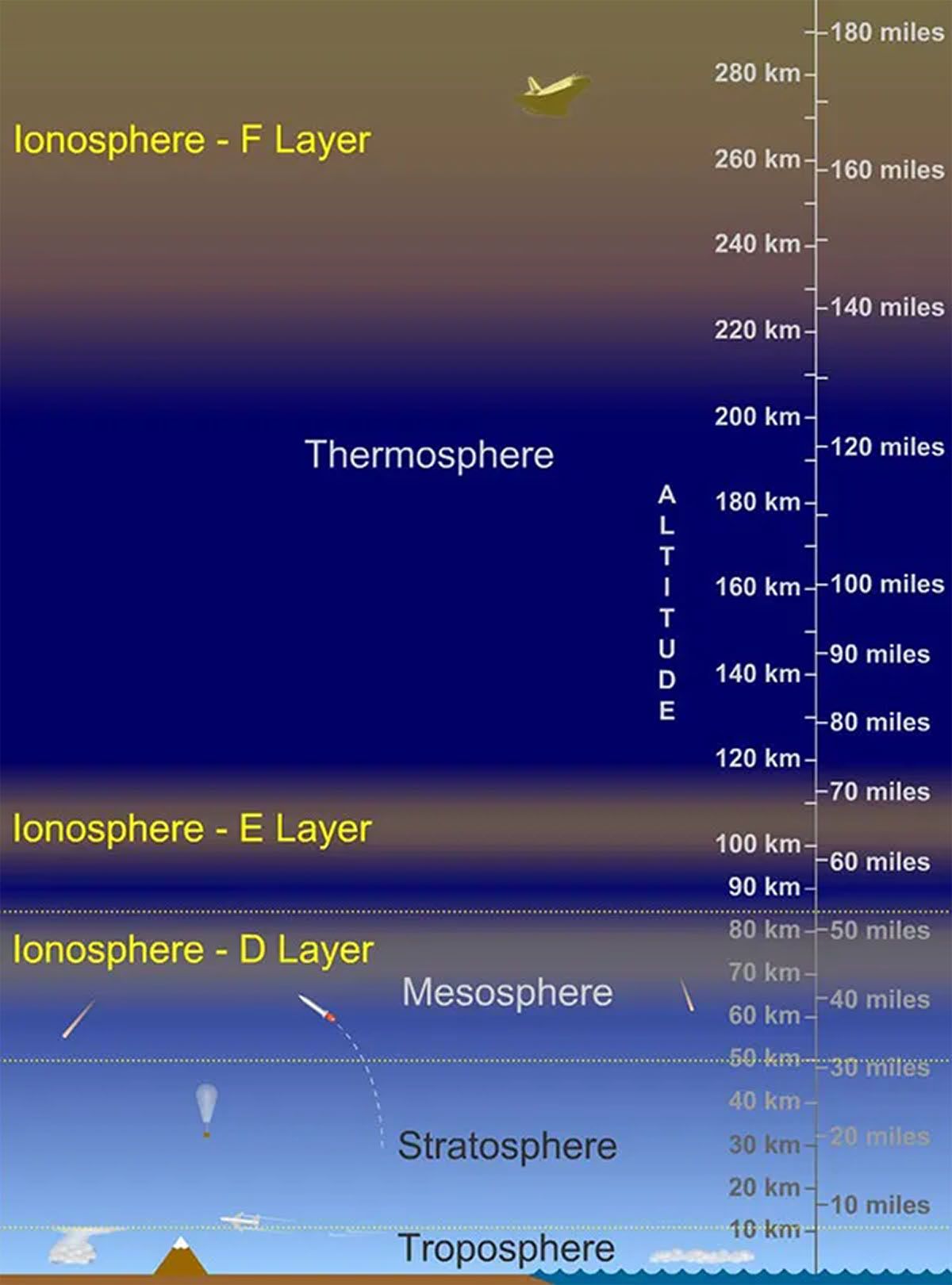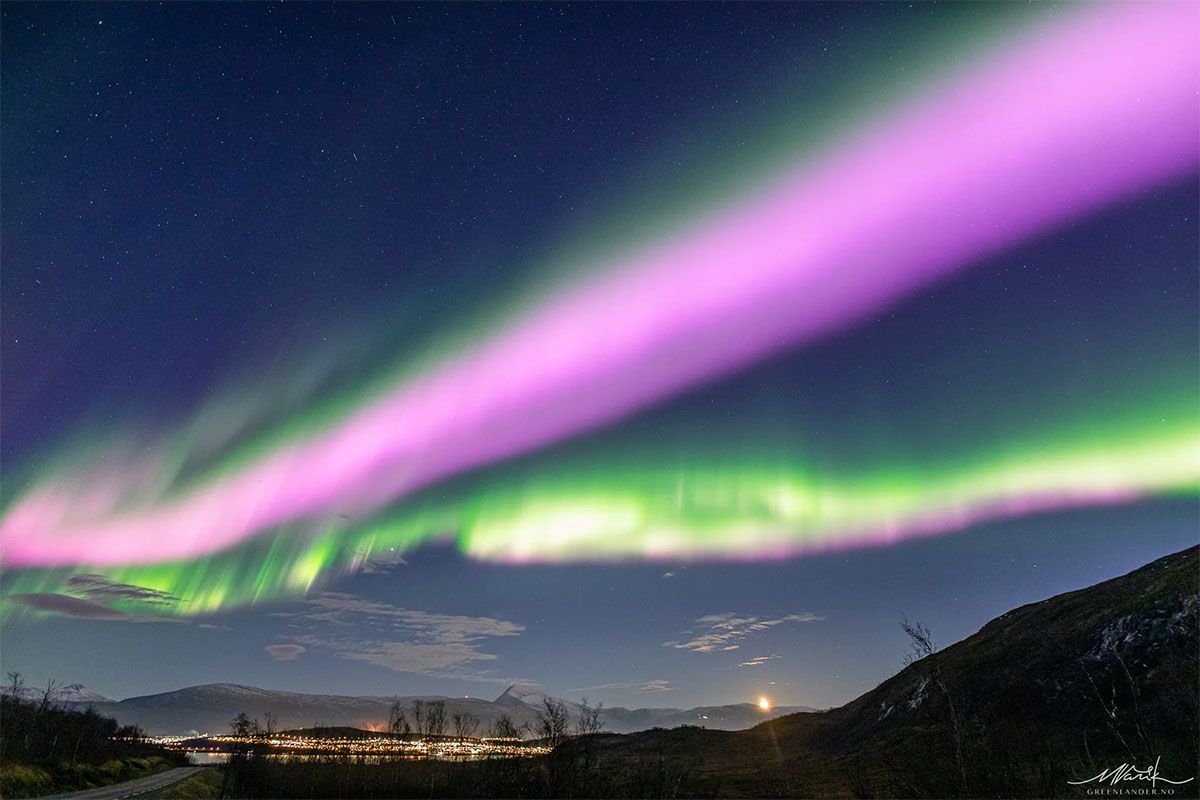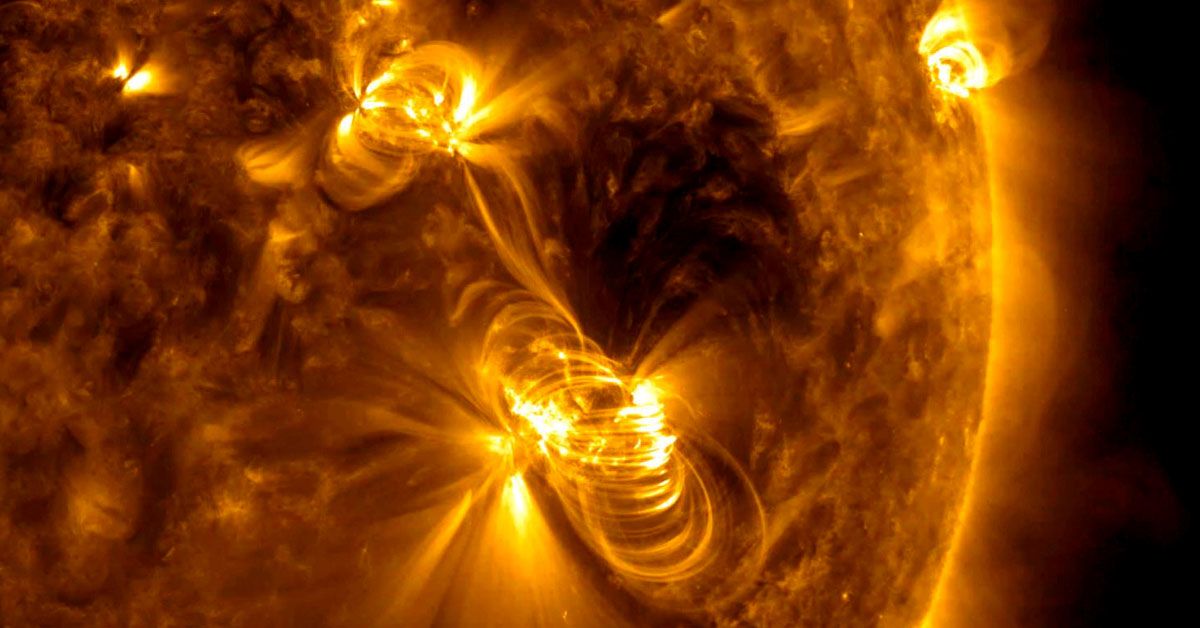In its magnificent grandeur, our Earth shelters us from the outer cosmic expanse. It provides a protective cocoon, keeping us safe from the harsh realities of space.
One of these protective layers is the thermosphere, an upper layer of our atmosphere. It serves as our planet's shield, absorbing and reflecting solar radiation. But what happens when this shield itself is under siege?
Lately, the thermosphere has encountered significant surges in temperature. These fluctuations can be attributed to solar storms, which are anticipated to become more frequent in the coming years.
The consequences of these temperature spikes extend beyond the thermosphere, potentially impacting the functionality of Earth's orbiting satellites and disrupting our comprehension of space weather.
Understanding the Thermosphere
The thermosphere, an outer layer of our atmosphere, is positioned above the mesosphere and beneath the exosphere. It acts as Earth's solar shield, bouncing back harmful solar and cosmic radiation.
Moreover, it hosts the International Space Station, demonstrating its pivotal role in space exploration.
Measurement of the thermosphere's temperature is a sophisticated task. Scientists rely on infrared radiation emitted by carbon dioxide and nitric oxide molecules present in this layer.

These molecules absorb the Sun's energy and re-emit it as infrared radiation, providing a temperature marker for this distant layer of our atmosphere.
The Thermosphere Climate Index, or TCI, is an important tool for measuring the thermosphere's 'weather.' The unit of TCI is terawatts (TW), a massive measure of energy.
The TCI value illustrates the energy these molecules emit in the thermosphere, signifying the layer's overall temperature.
Thermosphere’s Highest Temperature in 20 Years
On March 10, the TCI value hit a new high of 0.24 TW. This unprecedented peak marked the highest temperature in the thermosphere since December 28, 2003. This dramatic increase signaled the occurrence of something unusual on a solar scale.
A solar maximum is a period of high solar activity, characterized by an increase in sunspots and solar storms. The next solar maximum is predicted to occur in 2025.

Geomagnetic storms, triggered by coronal mass ejections (CMEs) and solar wind, were identified as the culprits behind the temperature spike.
These storms charge the thermosphere, resulting in more heating and infrared emission. The back-to-back storms have left a lasting impact, keeping TCI values remarkably high.
This is likely the beginning of a tumultuous time for our thermosphere, signaling the early onset of the upcoming solar maximum.
But what might this mean for the awe-inspiring sights of green and pink auroras?
Green and Pink Auroras
Auroras, with their captivating hues of green and pink, are breathtaking light shows visibly in the polar regions. They occur when charged particles from the Sun collide with molecules in Earth's atmosphere, creating an enchanting luminescence.

The frequency and vibrancy of these auroras are strongly influenced by geomagnetic storms. These storms supercharge the particles that result in auroras, leading to a brighter and more widespread display.
In fact, the recent extraordinary green and pink auroras were direct manifestations of the back-to-back geomagnetic storms we discussed earlier.
The Challenges Posed to Earth-Orbiting Satellites
The amplified thermosphere temperatures and solar activities pose significant challenges for Earth-orbiting satellites. A warmer thermosphere expands and increases the atmospheric density at satellite altitude.
This change can lead to an enhanced aerodynamic drag. Consequently, satellites may experience a higher risk of collision or even fall out of their orbits.
To mitigate these risks, satellite operators may have to implement evasive maneuvers. These could include repositioning their spacecraft in higher orbits, where the thermosphere's effects are less pronounced.

However, this solution requires careful planning and significant resources, making it a considerable challenge for satellite operations.
The complex dynamics of solar storms and space weather contribute to the uncertainty of these solutions. Predicting the precise timing and strength of geomagnetic storms and solar maximums is still a complex task.
This unpredictability makes it challenging for satellite operators to anticipate and plan the required maneuvers in advance.
Solar Maximum and Climate Change
Interestingly, the long-term decline in thermosphere temperatures due to excess CO2 caused by climate change adds another layer of complexity to this situation.
While solar activity heats the thermosphere, climate change seems to be counteracting this effect, leading to an overall cooling. The future interplay between these two opposing forces will shape the fate of our thermosphere.

The challenges posed by the warming thermosphere are significant, multifaceted, and interconnected. It's an intricate dance between the Sun, our atmosphere, and human-made climate change.
We must continue observing, studying, and understanding these interactions to effectively navigate the challenges of this unfolding cosmic saga.
Sources: pnas.org / livescience.com













